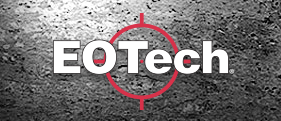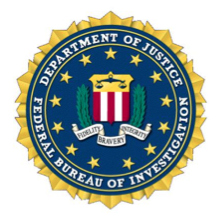
EOTech is one of the hottest brands under the L-3 Communications umbrella. However, the U.S. Military has recently discovered the company’s assurance the sights would function in extreme temperatures does not hold true. This stunning announcement has continued a tailspin effect on what has been one of the world’s largest and most popular holographic red dot sight manufacturers.
EOTech really soared into the public lexicon as the wars in Iraq and Afghanistan went into full effect. America’s military recognized much of the combat was street to street, house to house, and room to room. With combat occurring in close quarters, the standard iron sights on the M-16 and M-4 rifles were just not efficient. Red dot, or holographic weapons sights technology had been steadily improving for decades, and the military was eager to give its troops a head’s up advantage in fast target acquisition and aiming points to win the fight up close. The Trijicon ACOG is an outstanding optic for medium to longer ranges, but EOTech reflex sights provided a great solution to close quarters battle.

The FBI became lead investigative agency in the EOTech fraud case.
EOTech Settles $25.6 Million Suit
Despite the long history with the Federal Government, recent problems have arisen with actual performance promises made by EOTech, and since found to be woefully inaccurate by the U.S. Military. In particular, military testing has shown the zero on EOTech sights can be radically altered at certain sub-freezing or extreme heat temperatures – despite EOTech assurances to the contrary.
According to the complaint (United States v. L-3 Communications EOTech, Inc.) filed in Manhattan federal court, the Government lays out a compelling case that EOTech knew, or should have known, its products would not meet the very performance standards they said they would:
EOTECH has earned tens of millions of dollars through its sales of sights to DOD, DHS, and the FBI. In 2004, and again in 2010, EOTECH contracted with DOD to supply holographic weapon sights for use in close quarter urban combat as well as longer range target acquisition. EOTECH represented to DOD that its sights could operate in temperatures ranging from -40 degrees to 140 degrees Fahrenheit, as well as in humid and other extreme environmental conditions. Those representations were important because EOTECH’s combat optical sights were used by operators in Iraq and Afghanistan, as well as by special operations forces around the world.
By early 2006, Defendants knew that their sights failed to perform as represented. At hot and cold temperatures, the sights experienced a condition known as “thermal drift,” meaning that the sight’s point of aim differed from its point of impact. EOTECH’s own internal tests showed that some models experienced drift of 6 to 12 minutes of angle (“MOA”), i.e., 6 to 12 inches per 100 yards. Even though EOTECH’s contracts with DOD required disclosure of any information concerning the reliability of the sights, EOTECH did not disclose this defect to DOD until 2015, after the FBI discovered the problem and presented its findings to EOTECH.
In 2007, Defendants became aware of a separate performance failure in cold temperature, known internally as “cold weather distortion.” At around 32 degrees Fahrenheit, the sight’s aiming dot became distorted, affecting accuracy by 12 MOA, increasing to 20 MOA at 5 degrees Fahrenheit. Defendants did not disclose this defect from DOD for more than a year, until EOTECH had a fix in place. EOTECH then presented the fix as an upgrade to a product that conformed to specifications, and did not disclose that the entire stock of sights that DOD had purchased since 2004 was defective.
By 2008, Defendants also knew that EOTECH’s sights failed in humid environments, a defect known internally as “moisture incursion.” Although EOTECH represented that the sights passed humidity and other testing, Defendants knew that the seals leaked, allowing moisture to enter the sight, resulting in dimming of the circle and aiming dot necessary for acquiring a target. Over the next several years, EOTECH’s internal tests repeatedly confirmed these leaks. Nevertheless, EOTECH did not notify DOD of the problem until 2013, when it once again presented a fix as an upgrade to a product that conformed to specifications.
MANGANO, as president of EOTECH, was ultimately responsible for disclosing quality issues to customers. MANGANO was apprised of each of the defects with the sights and yet did not recommend disclosing any of the defects until he believed either a fix was in place or that DOD would find out about the defect from another source.
As part of today’s settlement, EOTECH and L-3 admitted that EOTECH knew that its holographic weapon sights experienced thermal drift, cold weather distortion, and moisture incursion. EOTECH and L-3 also admitted that despite EOTECH’s representations to DOD that the sights performed in hot, cold, and humid conditions, and despite EOTECH’s contractual obligation to disclose to DOD any performance-related data affecting the reliability of the sights, EOTECH continued to sell the sights to the Government for more than one year without disclosing cold weather distortion, and for several years without disclosing thermal drift or moisture incursion. MANGANO, who has been the president of EOTECH since 2006, admitted that he knew that the sights experienced cold weather distortion and moisture incursion, but EOTECH continued to sell the sights to the Government for over one year (in the case of cold weather distortion) or several years (in the case of moisture incursion) without a disclosure.
Mr. Bharara praised the DOD’s Defense Criminal Investigative Service, Naval Criminal Investigative Service, and Army Criminal Investigation Command; DHS Homeland Security Investigations; and the FBI for their investigative efforts and ongoing support and assistance with the case.
The case is being handled by the Office’s Civil Frauds Unit.
Outcome: Settled for $25,600,000.
EOTech and the U.S. Government
Several Federal law enforcement agencies have been using the [easyazon_link identifier=”B000KKFVRC” locale=”US” tag=”bluesheecom-20″]EOTech 552[/easyazon_link] holographic sight for years; including FBI, DEA, and BATFE. The L-3 EOTech sights have been extremely popular with several State and Local law enforcement agencies as well. In addition, the U.S. Military has been a large purchaser of EOTech holographic sights, with the [easyazon_link identifier=”B008CXKX7M” locale=”US” tag=”bluesheecom-20″]G33 magnifier[/easyazon_link] finding its way into the hands of designated marksmen as the middle east wars raged on.

The EOTech 552 has been used by FBI, DEA, and ATF (photo by EOTech).

The EOTech EXPS3 was selected by US Special Operations Command (photo by EOTech).
My department started with the EOTech N-cell battery model that is no longer in production. For the most part we have had success with the sights. Several find the outer circle to be a great way to frame a target for an easier point of aim, particularly during rapid fire. In addition, the outer circle of the sight, with its hash marks, can provide excellent off sets when shooting targets up close or at greater distances. Instead of a single dot, that requires the shooter to guess offset up close and at distances, the EOTech sights are programmed to give actual aiming points.

Author with Rock River Arms LAR-15 with EOTech optic.
Our issues arose from the batteries being in-line with the bore, causing some of the initial sights to stop working due to recoil. EOTech replaced those sights and the upgrades worked fine. The other issue was the relatively short duration of battery power by the N-cell batteries that are rather expensive.
Several years ago, around 2006, the U.S. Military started experiencing some problems with their EOTech sights. As time went on the problems were not corrected, but instead were shown to be more prevalent than originally expected. This resulted in a Department of Justice investigation.
EOTech was made aware of the problems early in the process. The company attempted “upgrades” to solve the issues, but even the upgrades were unsuccessful. The Department of Justice investigation turned into a fraud investigation. EOTech, realizing the likelihood they would lose the suit, set aside $26 million earlier this year. In an unprecedented, but very understandable move, EOTech settled the Federal suit later the same afternoon as the verdict was issued finding them at fault. I say understandable, because EOTech still hopes to keep Federal contracts, and any kind of hold out could seriously endanger current and future bids.
Final Thoughts
This is a serious blow to EOTech, and L-3 Communications, however I do not believe the death tolls have rung just yet. There is no doubt that EOTech may have to go back to the drawing board for military sales and products. However, their civilian market is very strong, and does not have the strict operating requirements of the military.
EOTech optics are very good optics. Though their are strong opinions and camps for Aimpoint, or Trijicon, I believe EOTech will remain a serious contender in the overall market. As for their military optics? They better get to work fast, and fix the problems, but the damage may already be done.
Mike Schrute says
I just sent in a return request.
My second failed attempt to zero the Eotech exps-3 will absolutely not zero in cold weather.
It is 30 F and both elevation and windage do not work. Yesterday, I had to spin the dial 2x before the reticle would move at all. Today, the windage will not budge, no matter how many revolutions I turn it.
It would have been a courtesy to send buyers a notice so we could at least be aware, rather than expeding a lot of ammunition to discover what they already know. I would suggest everyone NOT buy an eotech.
Eotech told me they will not accept a return of the magnifier that was sold with it. Not cool.